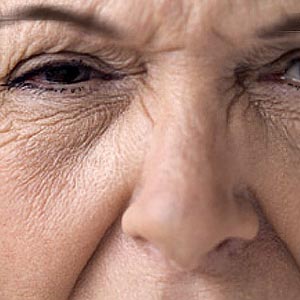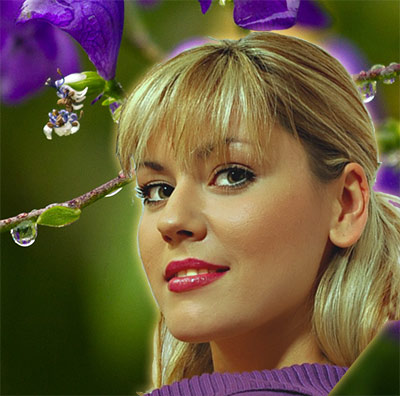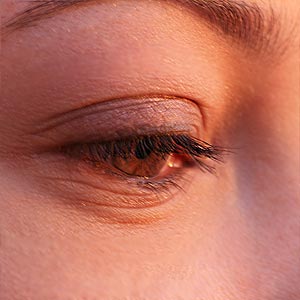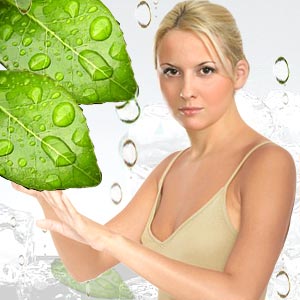Age Spots

Age spots, also known as liver spots, sun spots, solar lentigines, or senile are a common occurrence as the skin ages and is unable to regenerate from sun exposure. Though age spots are common after the age of forty, they can affect younger people as well.
True, age spots are harmless. In most cases, they pose no threat and require no special treatment. But most people consider them as a sign of aging and prefer to do away with it. As they appear like cancerous growth, these age spots can be lightened for cosmetic reasons with skin bleaching products or can be removed. In rare cases, age spots have been known to obscure the detection of skin cancer.
Causes of age spots
Age spots are seen to proliferate in those individuals who suffer from emotional distress. Age spots are caused by exposure to sun or other forms of ultraviolet light. This accelerates the production of melanin which is the dark pigment in the epidermis that renders the normal color to the skin. Extra melanin creates the darker color in the skin. Age spots develop when extra melanin gets clumped in higher concentrations.
Other than over exposure to the sun, growing older can cause extra production of melanin resulting in age spots. As one grows older, the body fails to detoxify through the intestines, kidneys, liver or lungs and detoxification occurs through the skin. The release of such free radicals leaves a stain or age spots in the skin. Genetics also play a role in causing age spots.
Identifying age spots
Age spots typically occur in people with fair complexion, but they can also be seen in those with darker skin. Age spots appear as a flat patch or macule. Age spots range in color from light brown, red, gray and black in flat and oval areas. They are seen in areas most often exposed to the sun, like the hands, face, forehead, arms, shoulders, backs of hands and tops of feet and on bald heads.
Age spots appear grouped together which makes them prominent. Age spots are accompanied by other signs of aging such as wrinkles, dry and rough skin and very fine red veins on the cheeks, nose and ears. The skin begins to look much thinner and translucent.
A dermatologist can diagnose age spots by inspecting the skin. Sometimes a skin biopsy is done in case of doubt. There are certain other conditions that resemble age spots.
- Moles are small and dark brown spots in varying size and color. These can be raised or flat and can develop in any part of the body.
- Seborrheic keratoses are wart like brown or black growths. They appear in a range of sizes and are not cancerous. They resemble age spots.
- Lentigo maligna is a type of skin cancer which can develop in areas of long term exposure to the sun. These start as tan, brown or black lesion and they enlarge and slow become darker. They are slightly raised and have irregular border and uneven coloring.
Treatment for age spots
As indicated earlier, liver spots are not medically dangerous, but they affect the cosmetic appearance of the skin. Age spots can be lightened or removed. Treatments for age spots include:
- Medications with prescriptions for bleaching cream which help to gradually fade the spots over time. Sun protection is strongly recommended for use of medication treatments.
- Extra melanocytes in the skin create dark pigmentation without damaging the skin's surface. Laser treatments can be undertaken for several sessions. The spots fade gradually after treatment over several weeks or months. This therapy has very few side effects but it is relatively very expensive.
- There is yet another procedure called cryotherapy which involves applying liquid nitrogen or any other such freezing agent on the age spots to destroy the extra pigmentation. The skin appears lighter. But freezing is used only where small groups of age spots appear. This procedure poses the risk of creation on a permanent scarring or discoloration.
- Dermabrasion procedure means sanding down or planing the surface skin with a rapidly rotating brush. Redness and temporary scrub formation occurs from this age spot treatment but gradually a new layer of skin grows in its place.
- Chemical peel gradually fades out age spots but several out treatments methodologies have emerged.
Preventing age spots
The best method of prevention would be to minimize the exposure to the sun. Use a sunscreen with sufficient sun protection factor (SPF at least 15). The sunscreen should be a broad spectrum one and block both ultraviolet A and ultraviolet B rays.
The sun has to be avoided at least during the intensity hours and the rays are most dangerous from 10 am to 4 pm. The skin should be covered with clothing, like long sleeved shirts, pants and wide brimmed hats. Sunglasses can be used to protect the eyes. Age spots can be warded off by taking multivitamins containing free radical fighting antioxidants like Vitamin C and E.
Home remedy for age spots
Horse radish 1 teaspoon
Fresh lemon juice 1/2 teaspoon
Vinegar 1/2 teaspoon
Rosemary oil 3 drops
The above mentioned mixture should be dabbed to age spots with a cotton swab once or twice a day. This will help exfoliate the top layer of the skin. Those with sensitive skin can use this treatment less often. Once the spots have lightened, the treatment can be discontinued.
Top of the Page: Age Spots
Tags:#Age spots
 Beauty
Beauty Facial Skin Care
Skin Care Essentials
Men's Skin Care
Beauty Control - Sunscreen
Sunburn Remedies
Natural Sunblock
Beauty Care Routine
Skincare Tips for Teens
Dry Skin Care
Asian Skin Care
Black Skin Care
Pregnancy Skin Care Tips
Oily Skin Care
Skincare For Aging Skin
Common Skin Problems
 Crow's Feet
Crow's Feet Hyperpigmentation
Melasma
Acne during Pregnancy
Back and Chest Acne
Adult Acne in Women
Excessive Sweating
Whiteheads
Cause Dark Eye Circle
Chapped Lips
Age Spot
Skin Cancer Symptom
Skin Care Treatments
 Chemical Skin Peels
Chemical Skin Peels Radio Frequency Skin Tightening
Electroporation Beauty Treatment
Home Remedies for Large Pores
Dermaplaning Benefits
Manuka Oil Benefits
Skin Needling
Cheek Fillers
Cosmetic Dermal Filler
Skin Lightening
Skin Exfoliation
Bamboo Massage
Dry Skin Brushing
Stretch Mark Removal
Freckle Removal
Rosacea Treatment
Skin Care Routine
Tretinoin Cream Benefits
Alpha Hydroxy Acid
Homemade Face Mask
Bath Salt Recipe
Tea Tree Oil
Wrinkle Cream
Almond oil Benefits
Jojoba Oil
Handmade Soap
Eye Creams
Facial Cleanser
Botox Cosmetic
Benefit of Aloe Vera
Shea Butter Benefit
Top of the Page: Age Spots
Popularity Index: 100,929

